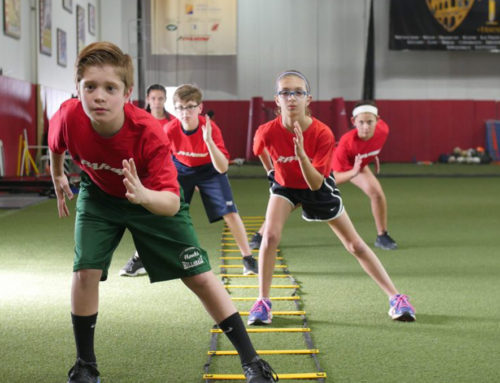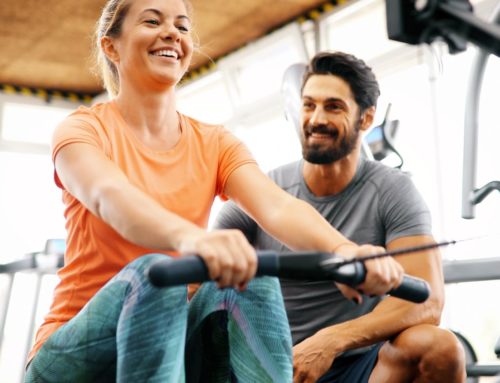By: Christine Bieber, CPT
As a personal trainer it is crucial to know how to teach modifications for any exercise. Often times one of my clients will surprise themselves by performing a difficult exercise in its modified form. Any exercise can be modified by either decreasing one’s range of motion, amount of weight, or eliminating jump training, also known as plyometric training. If you are recovery from an injury, suffer from joint pain, or want to avoid high impact exercises but still want to stay active, then try the modified exercises below and surprise yourself!
1. Jumping Jacks
Rather than performing traditional jumping jacks, you can reduce the pressure on your knees by replacing the jump with an alternating step jack. Start with your arms at your sides and your feet together. Then, step one foot out to the side while simultaneously raising both of your arms over head. Next, bring both of your arms back down to your side while bringing that leg back to meet the other leg that has not moved. Now repeat this motion on the other side by stepping your other foot out to the side (parallel to the stabilized foot) while both of your arms raise up overheard, and return all limbs back to center. Once you become accustomed to the motion, you can increase your pace.
2. Jump Rope
Rather than using an actual rope, I want you to pretend you are using a jump rope. Stand with your feet hip width apart and your wrist out at your sides. Lift one heel up off the ground and tap it on the floor while rotating your hands in a circular motion, and repeat this on the other side with your other foot. A modified jump rope is simply alternating heel taps (no jumping) while keeping a constant circular motion in your wrist and hands at your sides.
3. Butt Kicks
Usually when you perform an advanced butt kick, you are quite literally alternating your heels behind you to kick each butt cheek at a time. In order to modify this exercise while still increasing your heart rate, stand with your feet hip width apart and alternate your heels to kick your butt behind you without jumping.
4. High Knees:
An advanced high knee is standing with your feet hip width apart, your torso slightly slanted back to activate those core muscles while alternating your knees to come up towards your chest during a jump. In this case, I want you to stand hip width apart and simply alternate knee rises as high up towards your chest as you can go without jumping. Remember to always engage your core muscles.
5. Squats/ Jump squats
You can reduce the pressure put on your knees by replacing squats with wall squats. It is best to find an empty wall to place your back up against, and slowly lower your body into a squat with your knees at a 90 degree angle, and your back up against the wall. Stand up and regroup if you start to lose proper form. In addition to replacing squats with wall squats, you can also modify jump squats by tapping the floor with your hands in a squat position and then rising up on your toes with your hands up overhead.
6. Push-Ups
Take the pressure off of your shoulders and upper body during push- ups by replacing them with knee push- ups, wall push- ups, or incline push- ups. When performing knee push-ups you come down into a plank form with your knees on the ground and your wrist directly under your shoulders. Remember to keep your butt down during this exercise because having a weak core could result in raising your glutes in the air to release the contraction in your core. Wall push-ups are push-ups that you perform standing up in front of a wall with your shoulders wide and feet hip width apart. Decline push-ups can be performed with your feet up on a tire, stepper, box or any other stabilized piece of equipment.
7. Mountain Climbers
When performing a mountain climber, you are in plank formation with your wrist under your shoulders, feet hip width apart, butt parallel to the ground, and alternate jumping your knees into your chest. However, this is too much pressure on the shoulders, knees, and lower back for many. In order to modify a mountain climber, simply alternate stepping each knee into your chest rather than jumping. You can also perform mountain climbers at an elevated level similar to the push- ups if you want to decrease the pressure in your shoulders.
Need Some More Help? Schedule A Free Training Session!





